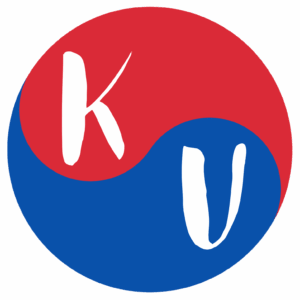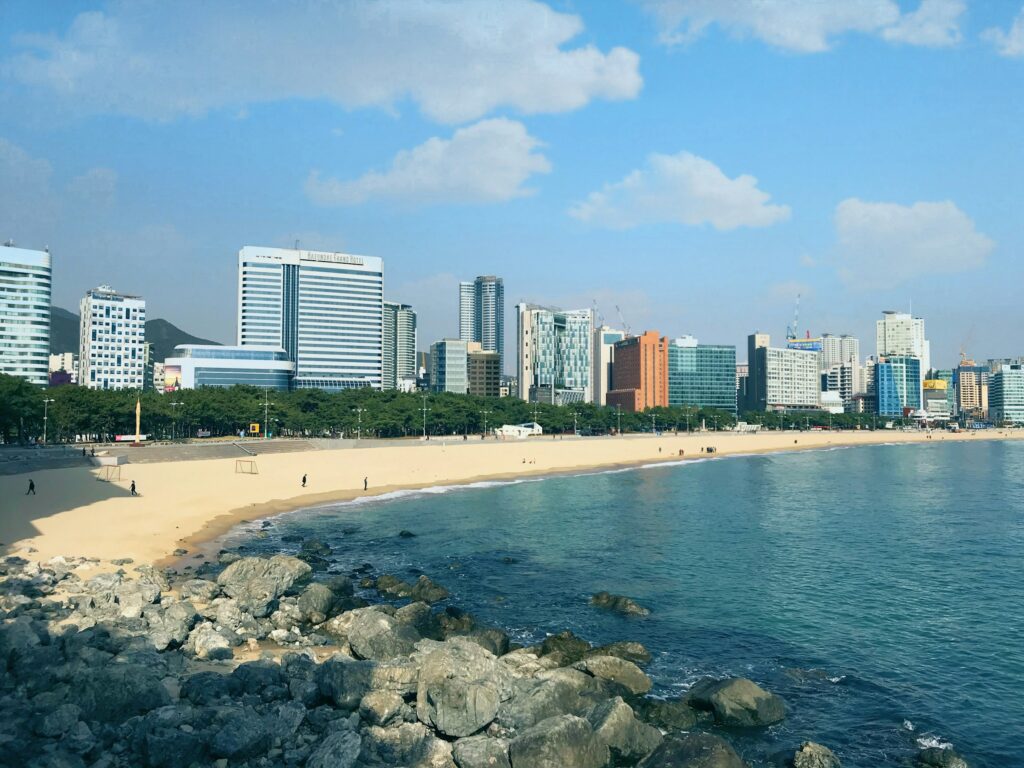Famed for the stunning cherry blossom spots, great weather, and beautiful landscapes, spring in South Korea is truly magical. With winter melting away, and the country warming up, you may wonder how to plan for your springtime Korea visit.
In this article, we will cover what weather to expect, where to travel to, the best things to see and do, and any events you don’t want to miss if you’re in Korea during the springtime!
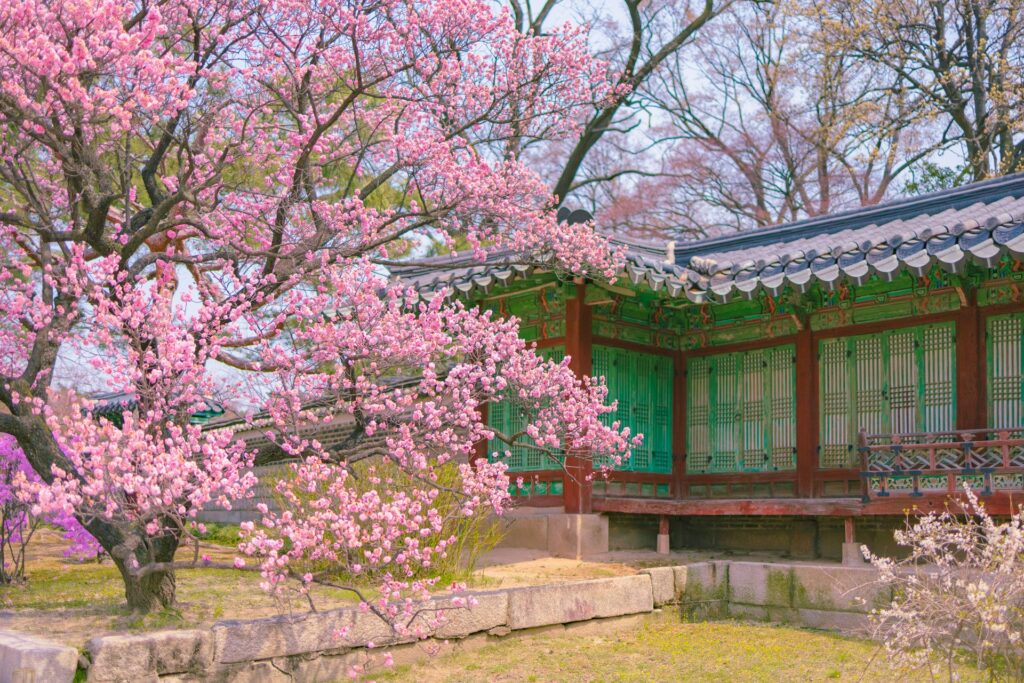
Photo by Soyoung Han on Unsplash
- Weather
- Fine Dust Pollution in Korea in Spring
- Where to Visit in South Korea in Spring
- Can you see Cherry Blossoms in Korea in Spring?
- What to Wear in Spring in Korea
- What to do in Spring in South Korea
Weather
If it’s your first time traveling to South Korea, it’s important to note that the country experiences four distinct seasons. Spring is a peak time to plan your trip, with great weather conditions and the gorgeous scenery that springtime brings.
Is it Cold in South Korea in Spring?
The temperature throughout the spring season in Korea varies widely, as spring and Autumn are the shortest months. At the height of spring, you can enjoy daily temperatures between 15°C and 18°C (59°F – 64.4°F).
Be sure to wear layers, as the mild temperatures can drop very cold on an evening, especially if you’re visiting in March.
If you’re looking to enjoy some warmer temperatures, it’s best to visit during late April, May, and early June.
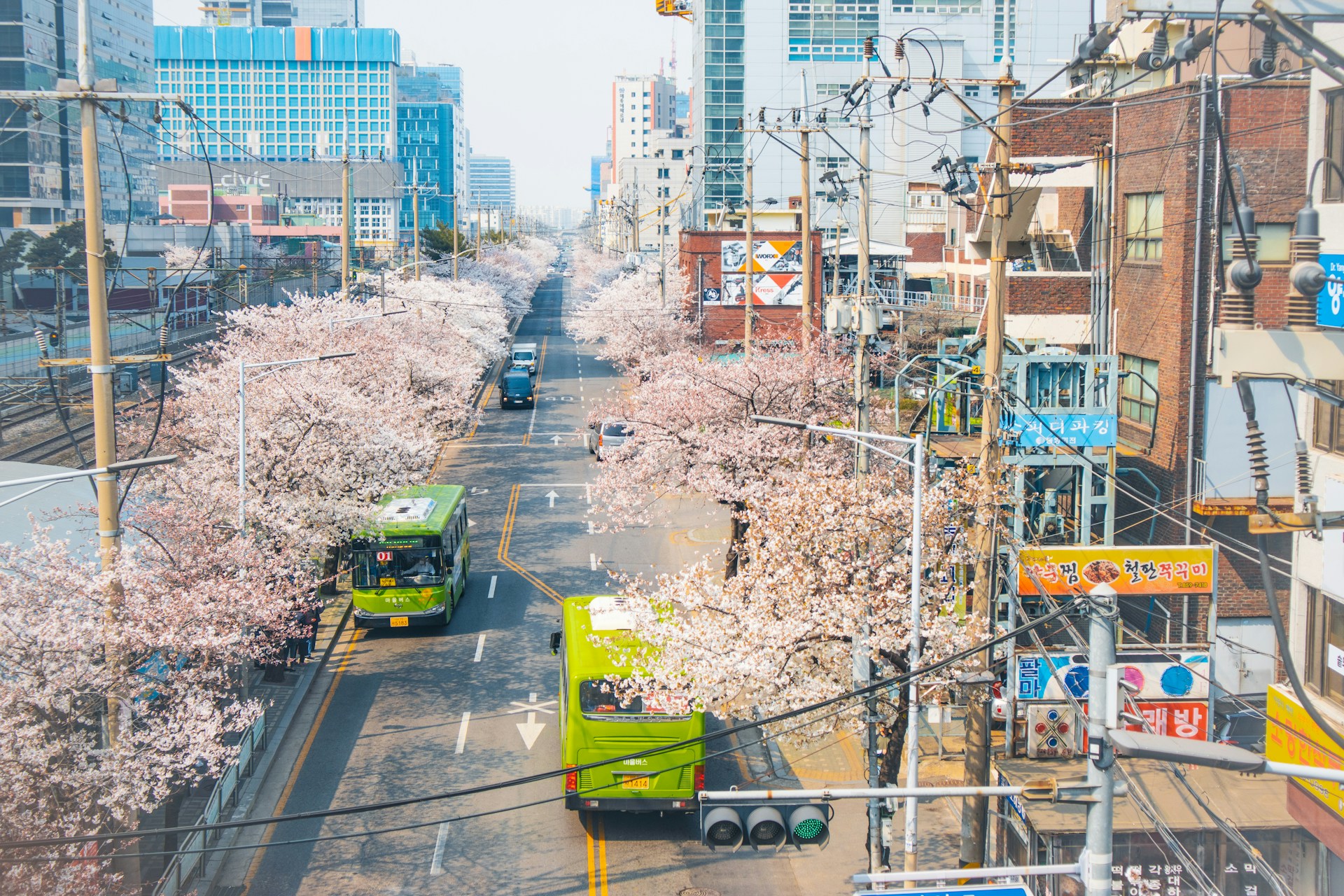
Photo by yeojin yun on Unsplash
When is Spring in Korea?
Spring falls between late March and early June in Korea, and the weather can vary greatly through these months.
Weather in March
March marks the end of winter and the arrival of spring in the region. During this month, the average temperatures start to rise.
The beginning of March can still be very cold, even dropping into the negatives. Towards the end of the month though, temperatures begin to rise, falling between 6°C and 15°C (41°F – 59°F).
The beginning of the spring season can also be a little rainy. Be sure to bring a waterproof jacket if you plan on doing many outdoor activities.
Weather in April
The temperatures continue to warm up in April, with the monthly average reaching 17°C (62.6°F). It’s still quite chilly at night during April, so be sure to pack a variety of layers for your trip.
April also sees quite a bit of rain compared to other months in Korea, however, you can still enjoy plenty of sunshine between the showers. Don’t let this put you off though! as early April is usually the best time to see the pink cherry blossom flowers in Korea.
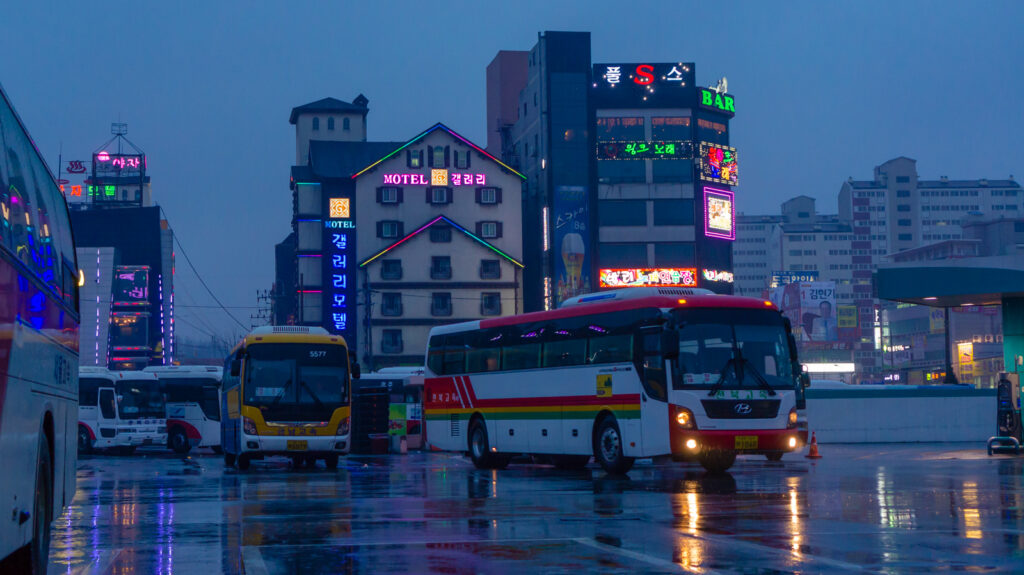
Photo by Romain Fouchard on Flickr
Weather in May
After April, May is generally one of the most beautiful times of year to visit South Korea. The weather is very pleasant, with comfortable warm temperatures and little to no rainfall.
This makes it the perfect time of year for outdoor exploration without getting too hot or too cold! Many visitors like to travel to Jeju Island during this month, as it provides great conditions for hiking the famous Hallasan mountain.
Weather in June
June sees the end of springtime and the beginning of summer in South Korea. The temperatures begin to rise even further, reaching an average high of 24°C (75.2°F) during the day, making it a great time of year to enjoy some ice cream. It’s a good idea to bring a light jacket for the evenings, as these still often drop cool.
If you’re looking for a warm summery getaway without having to contend with super high temperatures and painful sunburn, June is the best time of year to visit.
The end of June sees the beginning of the monsoon season. While travel costs might be cheaper, it’s a good idea to visit before then to experience South Korea in all its beauty. If you plan on staying a little longer, a good raincoat and umbrella should do the trick during the downpours!
June is the perfect time of year to visit for those looking for a warm and outdoorsy vacation.
Fine Dust Pollution in Korea in Spring
Fine dust pollution is always something to be aware of during your visit to Korea. High dust levels can be extremely damaging to your health. You don’t want to be battling migraines and drowsiness throughout your vacation, so it’s best to plan ahead. Either visit when fine dust pollution is low or ensure you buy masks and Tylenol ready to combat it!
Springtime in South Korea is actually the worst time of year for yellow dust. It’s best to avoid visiting at this time if you have any sensitivities such as asthma which may be triggered by the fine dust.
As with any travel to Korea, you should install an AQI (air quality index) app on your phone. This way, you can check dust levels daily and adjust your itinerary accordingly. Spend days with high levels of dust pollution doing indoor activities, such as visiting museums. Save days with low levels of dust for enjoying outdoor activities, such as hiking Korea’s beautiful mountains or taking day trips.
Where to Visit in South Korea in Spring
South Korea’s best destinations during springtime are arguably Busan and Jeju City. These popular spots are the ones that see warmer temperatures first.
They’re also the first destinations where the beautiful cherry blossom trees bloom, and the weather is great for enjoying outdoor activities. Take a stroll along the beach or enjoy a pleasant hike!
There are also a variety of great tours you can take in Busan during this time of year. These include a Busan Vicinity Cherry Blossom Tour, and a Cherry Blossom & Busan Sunrise Tour.
During late spring, anywhere in Korea is great to visit, with Seoul being one of the most popular choices. Why not plan a multi-stop cherry blossom trip through South Korea during springtime? This way, you can work your way up the country, admiring beautiful flora as you go.
Can You See Cherry Blossoms in Korea in Spring?
Much like Japan, South Korea is becoming infamous for its stunning springtime cherry blossom season. If this is something you’re hoping to catch during your trip, it’s important to visit at the right time. These cherry blossom trees don’t stay in bloom for long!
The best time to visit Korea to see the famous cherry blossom trees is between late March and early April. There are various kinds of cherry blossom festivals across the country, including Jinhae Cherry Blossom Festival and Gyeongju Cherry Blossom Festival.
Spring cherry blossoms bloom in the southern areas of the country first. You can expect to see the first spring blossoms in areas such as Busan and Gwangju. Slowly, the blossoms appear upwards across the country, popping up in Seoul towards the end of Korea’s cherry blossom season.

Photo by Ryoo Geon Uk on Unsplash
King cherry blossoms can also be seen in Korea. These are bigger than regular cherry blossom trees and are a little darker pink in color.
Some of the best cherry blossom spots in the country that boast an abundance of cherry blossom trees are Nami Park on Nami Island, Songpa Naru Park, Eden Cherry Blossom Road, Namsan Park, Jinhae, Yeouido, Seoul Forest, Ilsan Lake Park, and Jeju Island.
There are also plenty of amazing cherry blossom-themed gifts and cherry blossom-themed snacks at this time of year. Try some cherry blossom popcorn, squishy rice cakes, or special cherry blossom drinks during your spring visit.
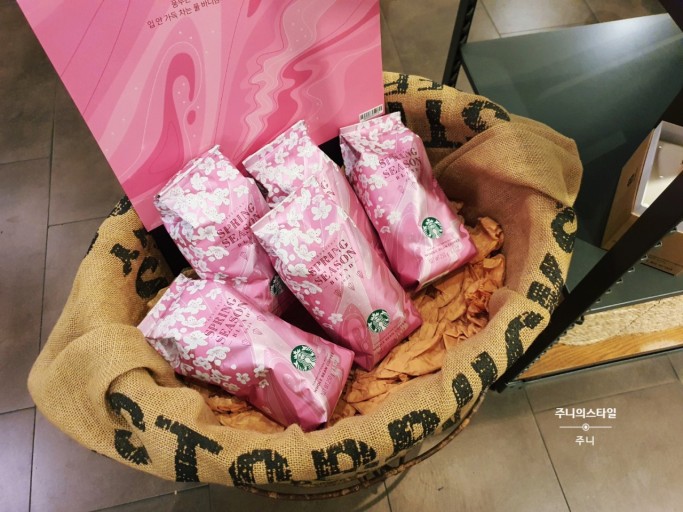
Even Starbucks joins in on the special events! – Photo by Junie on NaverBlog
What to Wear
One of the most important parts of traveling anywhere is being sure to bring the right things with you. When it comes to packing your case for travel to South Korea during the springtime, it’s important to pack accordingly.
Be sure to bring plenty of layers to wear. For the majority of the spring season, the days are mild, but temperatures can drop in an evening.
If you’re visiting at the beginning of the spring season at the end of winter, it’s best to pack plenty of sweaters, jackets, and things to wrap up warm in. Mid-spring season a good combination of clothing to layer according to the weather each day is essential. When it comes to traveling at the end of the spring season, just one or two jackets should be fine, alongside a combination of t-shirts and cooler clothing.
Be sure to check the weather forecast before traveling though. If it is forecast to rain, then it may be best to also pack a waterproof jacket.
It’s also a good idea to bring SPF and a pair of sunglasses with you to Korea, as the sun can get pretty intense, especially towards the end of spring.
What to do in Spring in South Korea
Now that we’ve established that Spring is a fantastic time to visit South Korea, let’s take a look at some of the best ways to spend your time there.
Events and Festivals
With the weather warming up, both tourists and Koreans alike enjoy spending their time outdoors. Here are some great festivals and events you can attend during your springtime visit to enjoy more Korean culture.
Events and Festivals in Korea in March
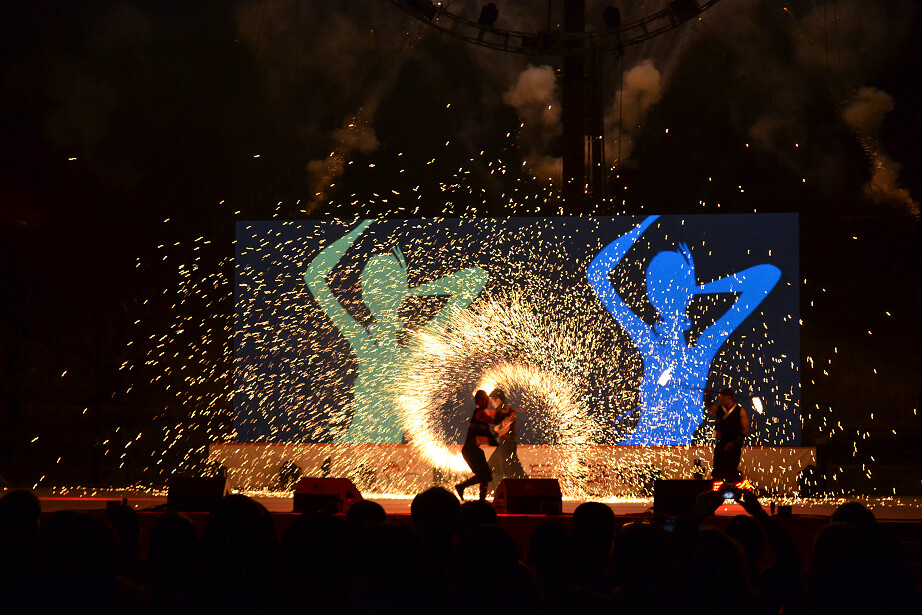
Fire Dancers at Jeju Fire Festival – Photo by Noby Leong on Flickr
- Jeju Fire Festival, Jeju: If you plan on visiting Jeju island as part of your trip, it’s a good idea to head there in early March. This is when the Fire Festival is held, celebrating the start of spring. Visitors can witness a ceremonial field burning, which is a symbol of ancient Korean agricultural practices.
- Gwangyang Maehwa Festival, Gwangyang: Situated between the more famous cities of Gwangju and Busan, Gwangyang is a small city, home to the Gwangyang Maehwa Festival, also known as the Plum Blossom Festival. This is one of Korea’s earliest spring flower festivals and takes place over the first half of the month. It boasts 80 acres of blooming trees with beautiful seasonal flowers to see.
- Gurye Sansuyu Festival, Gurye: The small town of Gurye is home to this festival which takes place each year. It celebrates the beautiful yellow blossoms of the cornelian cherry. This is another gorgeous spot to visit for those who love exploring flora and fauna.
- Yeongdeok Snow Crab Festival, Yeongdeok: A small coastal village located just north of Pohang, Yeongdeok is a great place to stop at during this time of year if you’re a foodie. Home to the Snow Crab Festival, an event that features both a Snow Crab market and even a cooking competition! Snow Crabs from Yeongdeok were originally served as a Korean food for Kings. Grab something from one of the food stalls to experience eating like Royalty during your stay in Korea.
Events and Festivals in Korea in April
- Jinhae Gunhangje Cherry Blossom Festival, Jinhae: A small district of Changwon, just outside of Busan, Jinhae is an unassuming destination that is actually home to the largest cherry blossom festival in all of South Korea. There are kilometers of cherry blossoms to be seen in bloom across a large forest here. This festival celebrates the honor of Admiral Yi Sun-Shin (whose statue can be seen at Gwanghwamun Square in Seoul). It is one of the most famous spots in the whole country for cherry blossom viewing.
- Yeondeunghoe: Held throughout South Korea every year, Yeongdeunghoe, also known as The Lotus Lantern Festival is held in celebration of the birth of Buddha in the fourth month of the Lunar New Year. All across the country, you can see stunning colorful lanterns at establishments and Buddhist temples, and even a lantern parade.
- Taean Tulip Festival, Taean: Located north of Daejeon, Taean is a small town near the coast that is home to this famous tulip festival. Visitors can view fields full of these beautiful spring flowers, and enjoy taking beautiful spring photos with gorgeous views of the colorful flower backdrop. Be sure to stay until the evening too, when a stunning light festival takes place after dark.
- Goryeosan Mountain Azalea Festival, Ganghwa: Located just north of Incheon, Ganghwa Island’s stunning landscape boasts a gorgeous array of pink azalea flowers in bloom. A stunning day trip from Incheon or Seoul, visitors can hike up Goryeosan mountain to take in the stunning views.
- Jindo Miracle Sea Road Festival, Jindo: Located in the southernmost part of Korea, Jindo Island, made famous for its native Jindo dog breed, is home to the Jindo Miracle Sea Road Festival. This festival takes place in late April or early May, during which a natural phenomenon occurs, causing the Yellow Sea to drop by 42 m (138 feet). This created a path or ‘road’ on which visitors are able to walk between the islands of Jindo and Modo. People gather here to celebrate the ‘miracle’ of the sea parting.
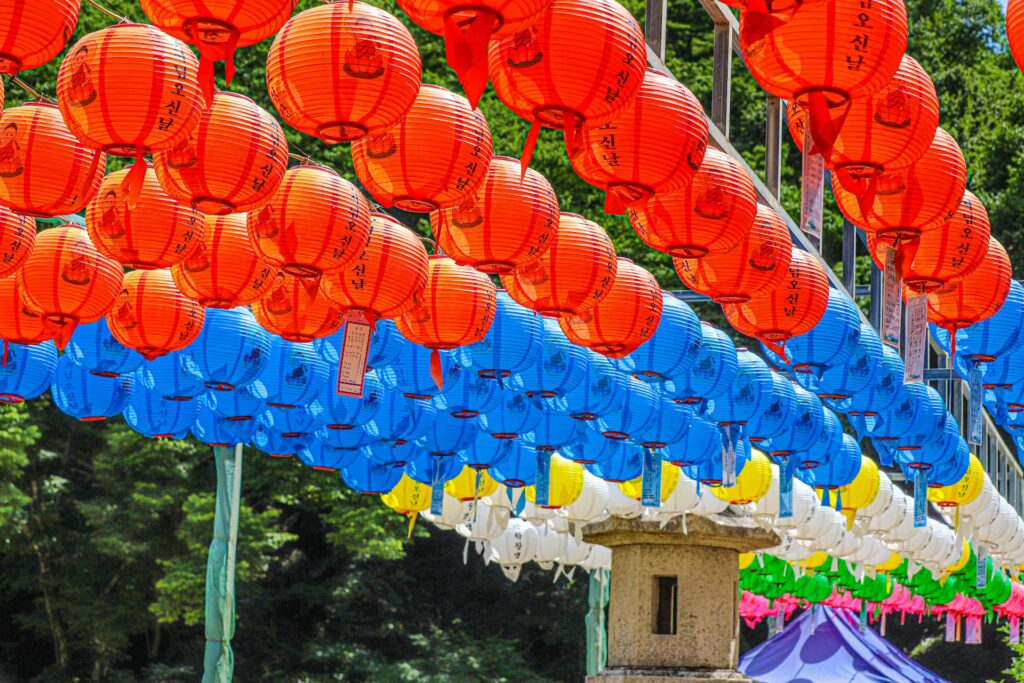
Events and Festivals in Korea in May
- Jindo Miracle Sea Road Festival, Jindo: As we just explained, this is a natural phenomenon, so it’s not guaranteed when this will take place, but sometimes it can be in early May.
- Boseong Aromatic Tea Festival, Boseong: South of Gwangju is the town of Boseong, famous as being the birthplace of the tea industry, tea lovers flock to this festival every year. If you’re able to attend, you can enjoy picking tea leaves, making tea, and sampling some local snacks.
- Damyang Bamboo Festival, Damyang: Just north of Gwangju is the small town of Damyang, home to South Korea’s largest bamboo forest. The Bamboo Festival, held at the beginning of May is the best time to head here to celebrate the beauty and value of the bamboo plant.
- Haeundae Sand Festival, Busan: I visited this one a few years ago with my mother for her birthday just to check out the sculptures. Whilst some people opt to enjoy the festivities that take place, others, like myself, simply pass through to admire the artwork. Every year, this festival boasts life-size sand sculptures and artworks, as well as a variety of concerts, street foods, and fireworks.
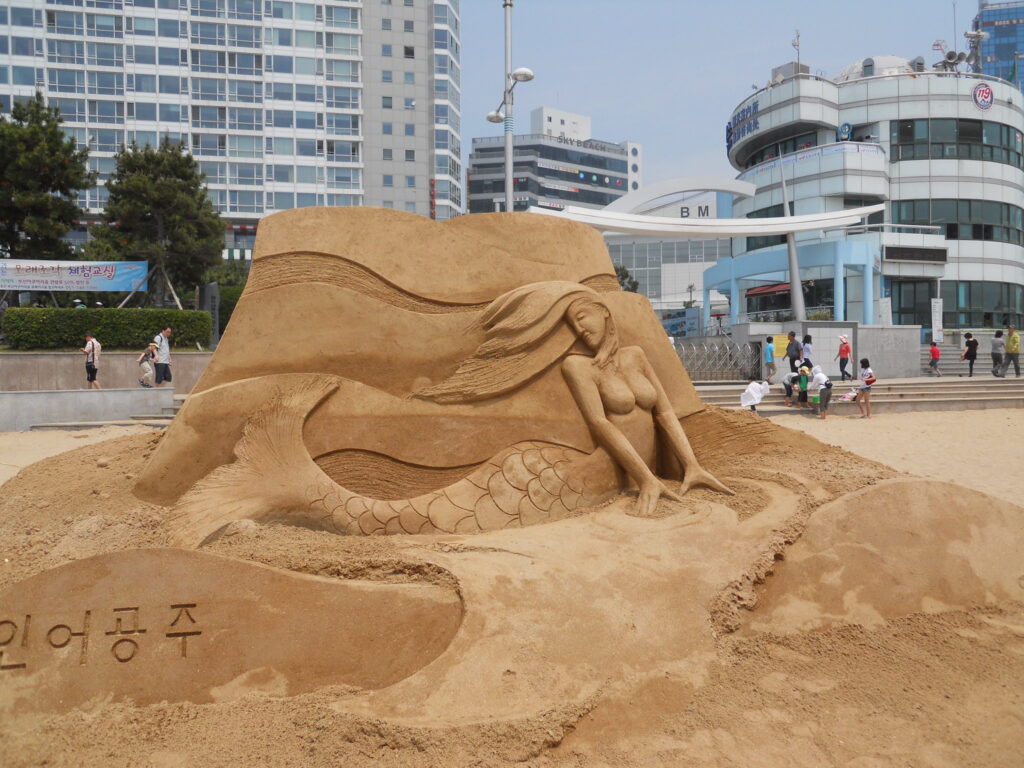
Events and Festivals in Korea in June
- Waterbomb Festival, South Korea: A great one for all young travelers and students, the Waterbomb Festival is the largest music and water-themed festival in all of South Korea and marks the start of the music festival period in the country. Visitors can enjoy a range of EDM and hip-hop music, as well as the most epic water gun battle you just may have ever seen! The main event takes place in the capital city of Seoul, but if you’re planning on being elsewhere whilst this is taking place, don’t worry – there are a few other ‘mini versions’ that take place in other major cities, so you don’t need to miss out!
- Toechon Tomato Festival, Toechon: Toecheon is a small village in Gwangju City, that is known nationwide for its production of tomatoes. This quirky festival is certainly one of a kind for anyone who loves tomatoes (not me!) Visitors can enjoy a plethora of tomato-themed events, including a competition to build the tallest tomato tower, tomato picking, and even bathing in a tomato pool. If you love tomatoes, this could certainly make for a unique and fun day out!
- World DJ Festival, Seoul: Another one for the younger crowd, the World DJ Festival takes place annually in the capital city of Seoul, and showcases a variety of different music genres, played by a number of great DJs from around the world.
- Hansan Ramie Fabric Cultural Festival, Seocheon: Located near Jeonju, the town of Seocheon is famous for being the producer of the natural fiber of ‘ramie fabric’. Visitors to the festival can enjoy a clothing display and fashion show of garments made from traditional Korean Ramie Fabric.
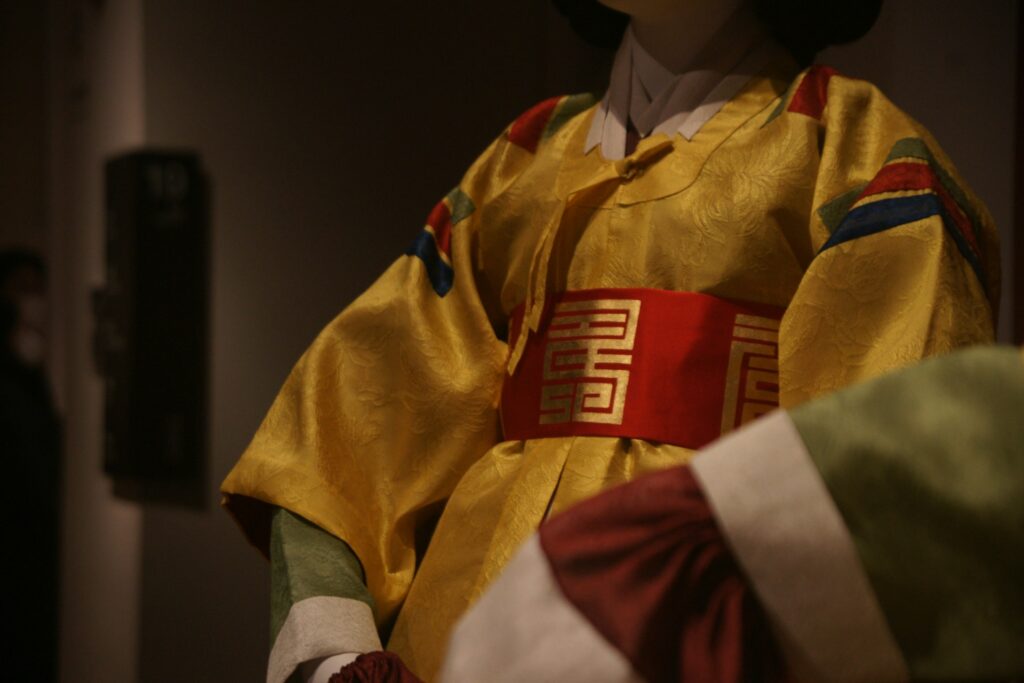
Korean Hanboks were traditionally made of Ramie fabric, you can see traditional ones at Hansan Ramie Fabric Cultural Festival and learn how they’re made – Photo by Dawn Kim on Unsplash
Tags: cherry blossom, events, spring, weather
